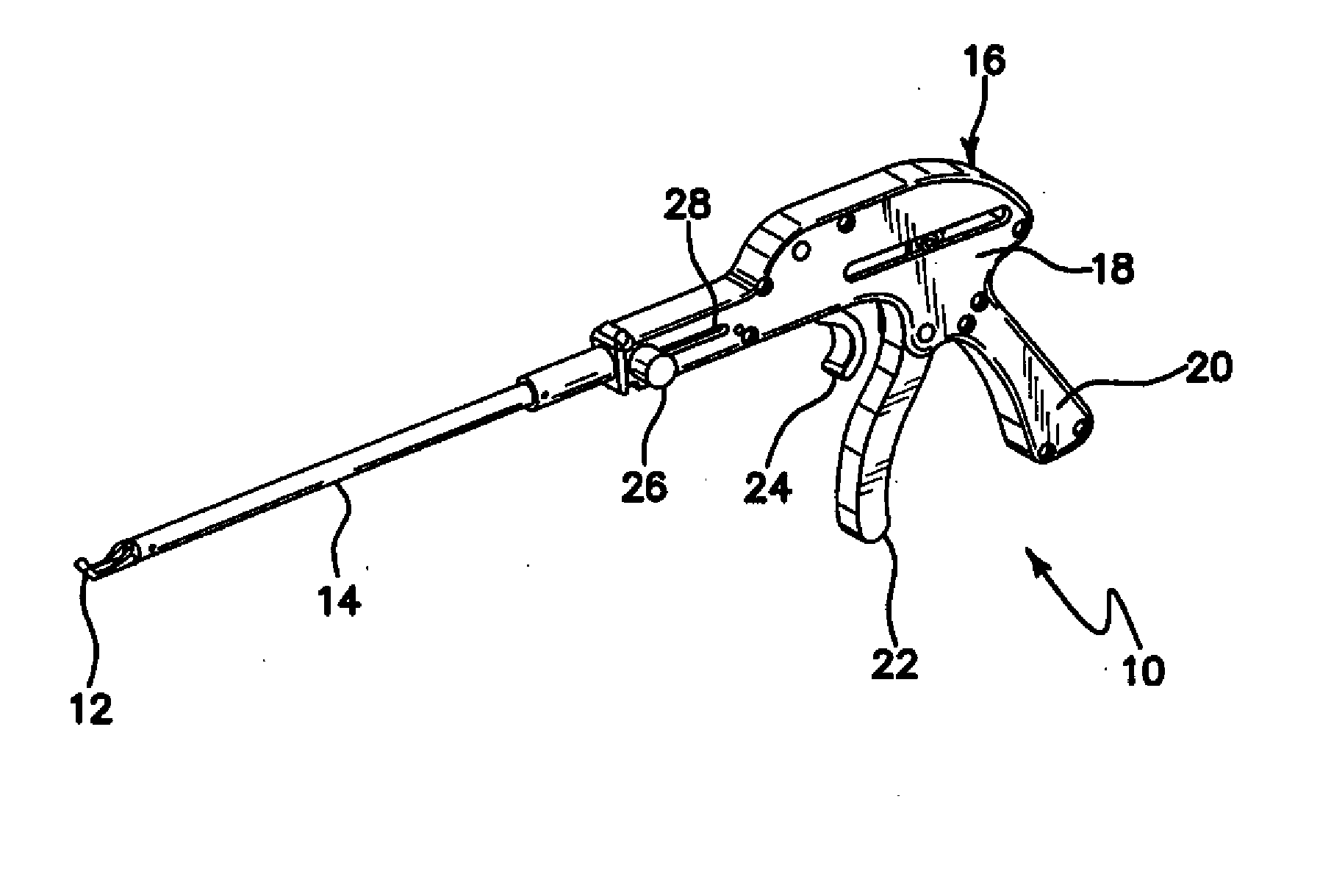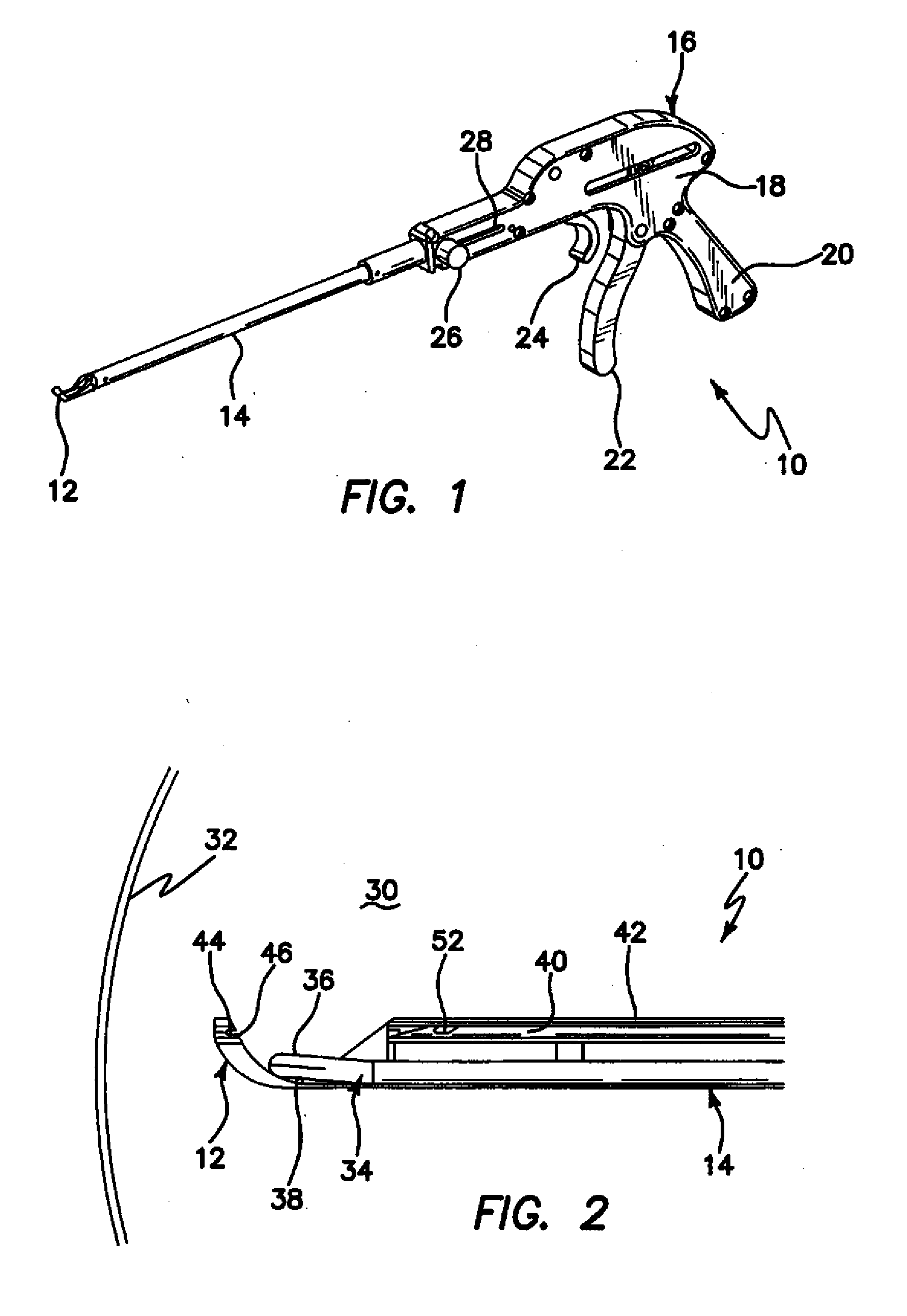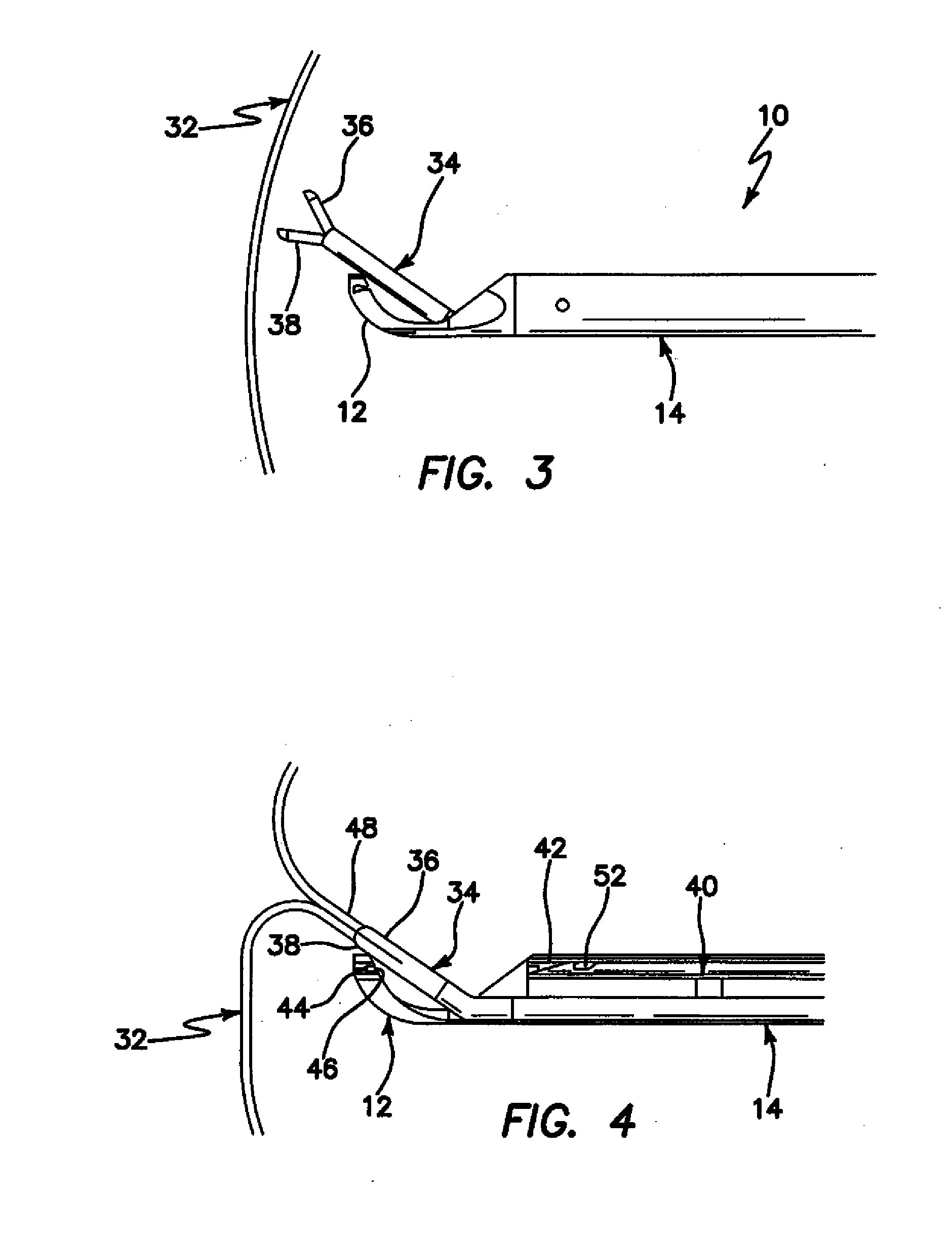Arthroscopic soft tissue plication systems and methods
a technology of soft tissue and plication, which is applied in the field of methods and apparatus for surgical stabilization of human shoulder joints, can solve the problems of common medical problems, deterioration of structure, and loss of firmness, and achieve the effect of reducing loading forces
- Summary
- Abstract
- Description
- Claims
- Application Information
AI Technical Summary
Benefits of technology
Problems solved by technology
Method used
Image
Examples
Embodiment Construction
[0058]Referring now more particularly to the drawings, there is shown in FIG. 1 a plication instrument 10. The instrument 10 comprises a distally disposed suture cartridge 12 and an instrument shaft 14 extending proximally from the suture cartridge 12. A handle portion 16 comprises a handle housing 18, which is integrated into the shaft 14, as well as a grip 20, a needle advancement lever 22, and a grasper actuation trigger 24. A shaft advancement knob 26 is slidable axially within a slot 28.
[0059]The attachment of the suture cartridge 12 to the instrument shaft 14 allows the surgeon to unload and re-load suture cartridges after every plication stitch.
[0060]Now with reference to FIG. 2, a distal end of the instrument 10 is illustrated. In this figure, the instrument 10 has been introduced into an operative site 30, which is preferably a human shoulder. Within the shoulder 30, the instrument 10 is illustrated as it approaches the shoulder capsule 32. A flexible cable grasper 34 is po...
PUM
 Login to View More
Login to View More Abstract
Description
Claims
Application Information
 Login to View More
Login to View More - R&D
- Intellectual Property
- Life Sciences
- Materials
- Tech Scout
- Unparalleled Data Quality
- Higher Quality Content
- 60% Fewer Hallucinations
Browse by: Latest US Patents, China's latest patents, Technical Efficacy Thesaurus, Application Domain, Technology Topic, Popular Technical Reports.
© 2025 PatSnap. All rights reserved.Legal|Privacy policy|Modern Slavery Act Transparency Statement|Sitemap|About US| Contact US: help@patsnap.com



